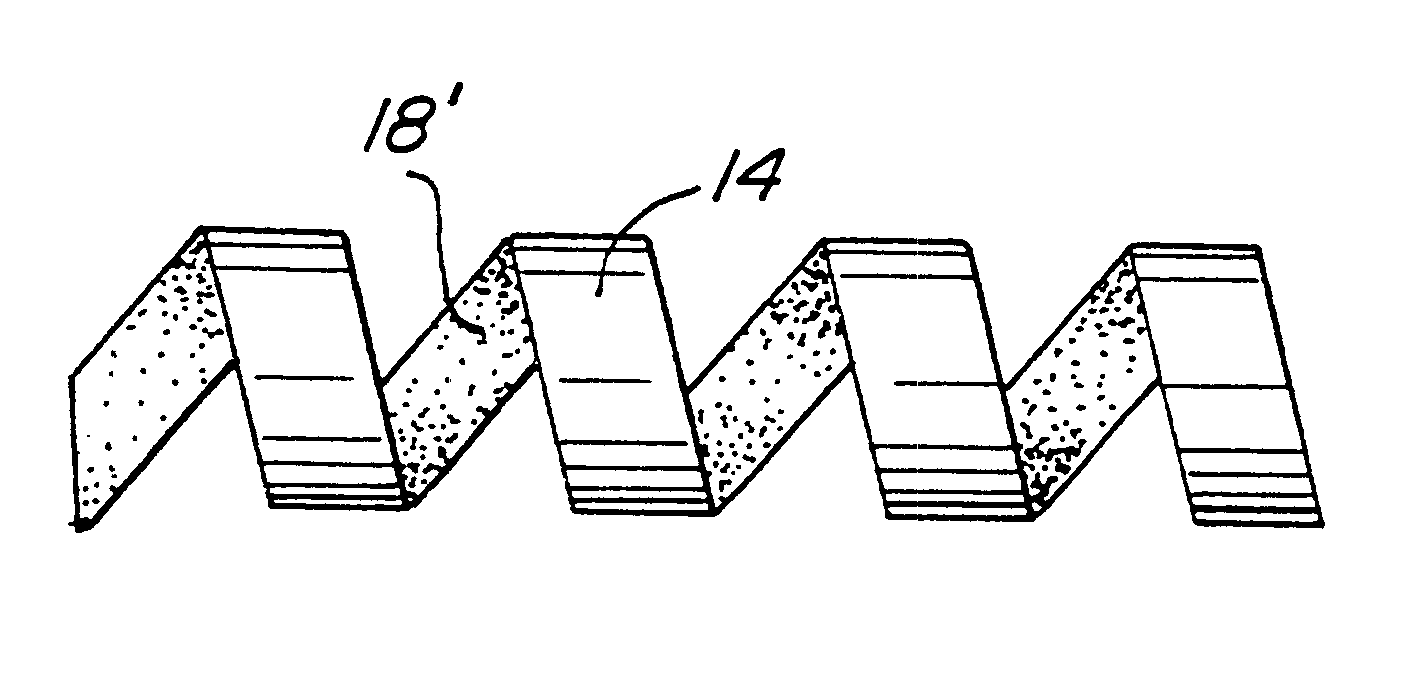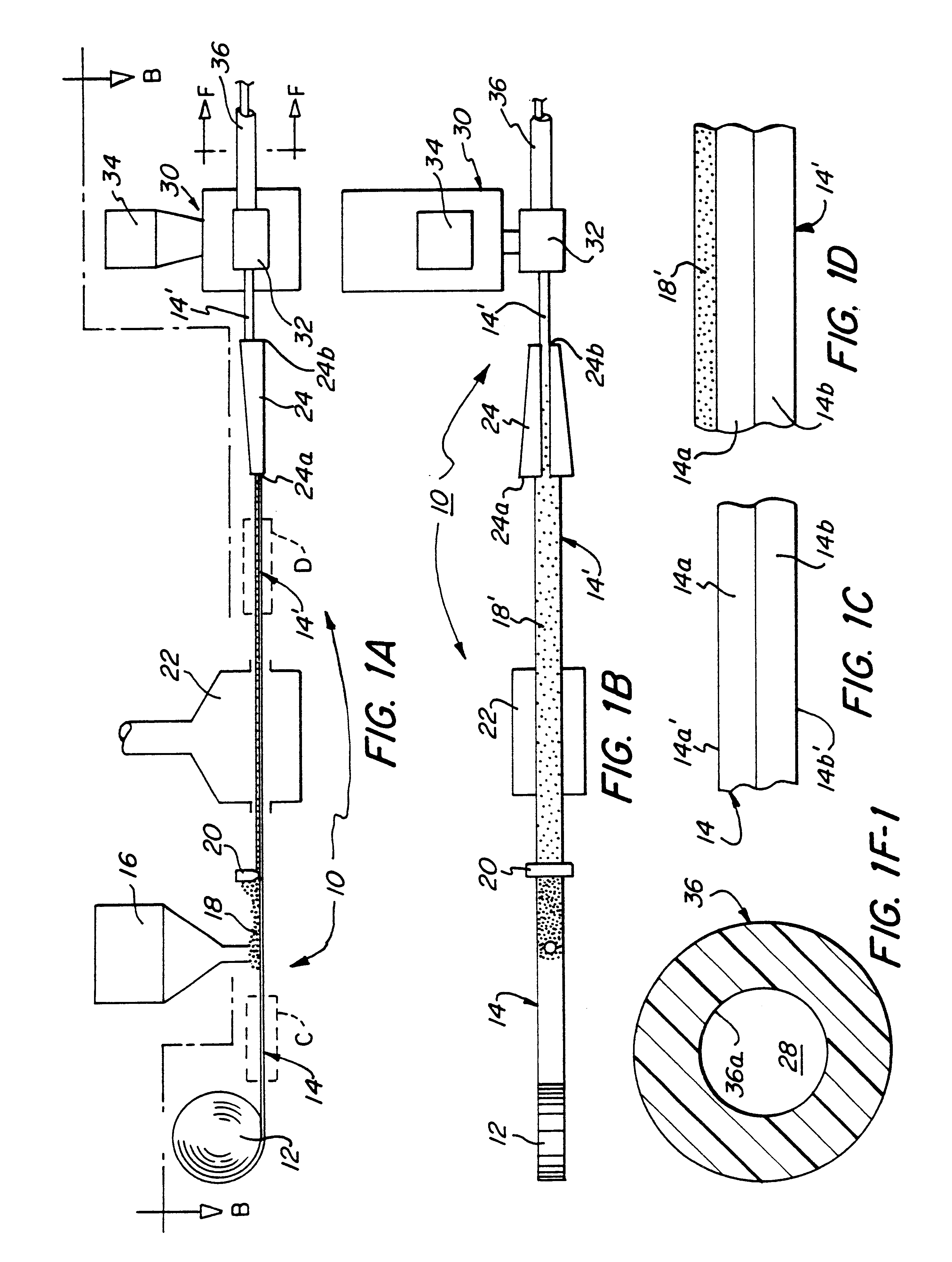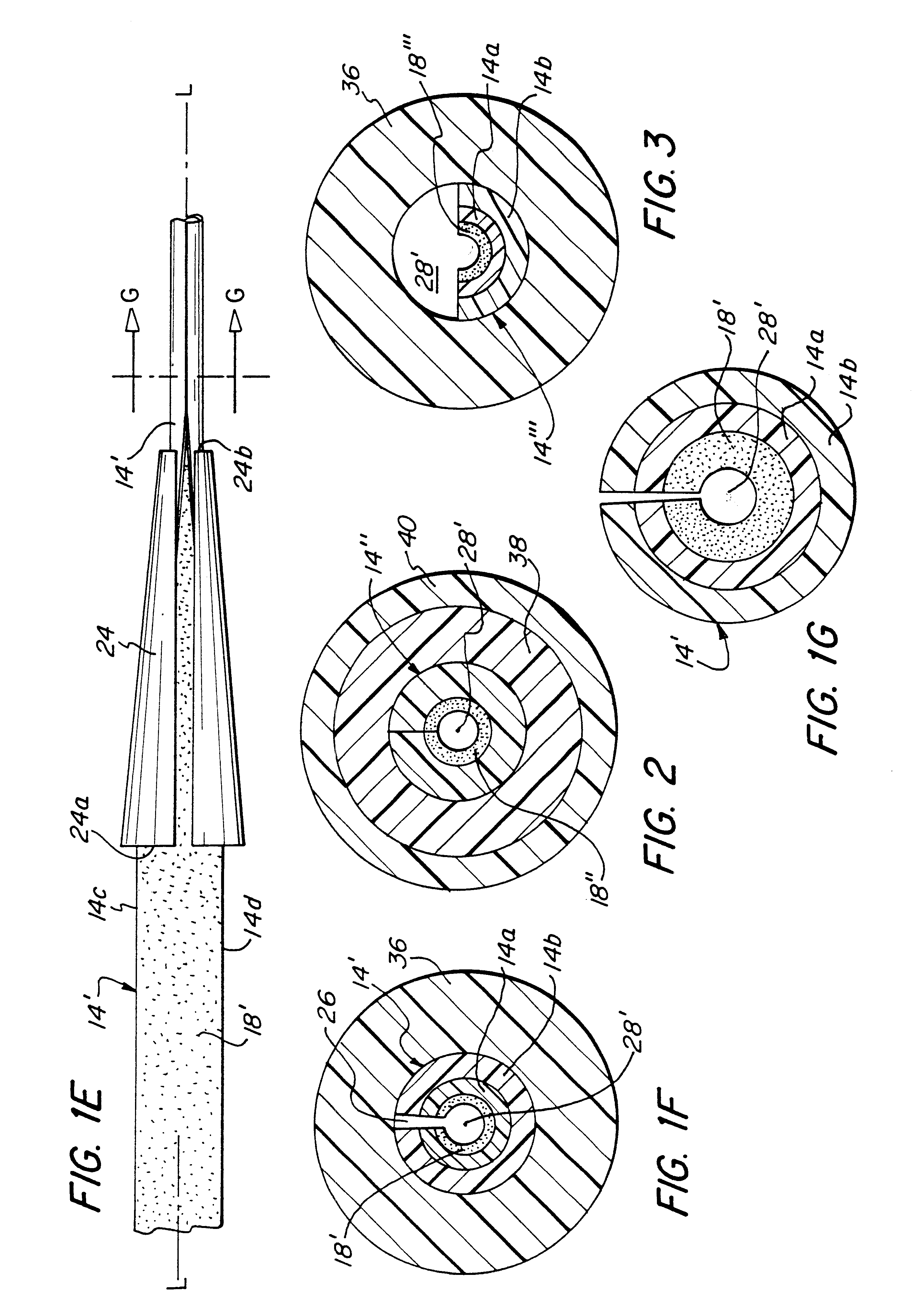Method of making a signal transmission fuse
a signal transmission and fuse technology, applied in the field of signal transmission fuse making, can solve the problems of insufficient field use toughness, unacceptably high water vapor and oil permeability, and easy degradation of ionomers
- Summary
- Abstract
- Description
- Claims
- Application Information
AI Technical Summary
Benefits of technology
Problems solved by technology
Method used
Image
Examples
example 1
Explosive compositions comprising the reactive paints listed in TABLE I were applied to a two-layer support tape of polyethylene terephthalate and polyethylene, 5 mm in width, at a core loading of 20 to 40 g / m.sup.2, approximately equivalent to a linear core loading of 100 to 200 mg / m. The support tape was approximately 0.1 mm in thickness, the polyethylene terephthalate layer being 0.05 mm thick and the polyethylene layer being 0.05 mm thick. One of the reactive paints was applied to the polyethylene terephthalate side of a sample tape and dried to provide a dried coating.
The coated support tape is formed into a tubular or folded configuration with the polyethylene side on the exterior of the tubular or folded configuration and bonded to the inner surface of a tubular polyethylene sheath extruded about the folded, coated support tape. The extruded polyethylene tube had an inside diameter of 1.8 mm and an outside diameter of 4.0 mm. The folded, coated tape enclosed within the polyet...
example 2
An explosive composition of each of the reactive paint compositions 1-4 of TABLE II, having various core loadings in the range of 40 to 200 g / m.sup.2, was applied to the polyethylene terephthalate side of a two-layer film of polyethylene terephthalate and polyethylene, 6 mm in width and 0.1 mm thick, the polyethylene terephthalate layer being 0.05 mm thick and the polyethylene layer being 0.05 mm thick. The coated tape is formed into a tape support with the polyethylene side on the exterior, and is bonded to the inside surface of a tubular polyethylene sheath as the tube is extruded about the tape support.
The polyethylene tube had an inside diameter of 2.0 mm and an outside diameter of 3.8 mm. An open space of about 0.28 mm diameter remained between the reactive coating on the support tape and the inner surface of the polyethylene tube. The open space extended along the length of the tube so that the dried coating was exposed to air along the length thereof.
A 10 meter length of each...
PUM
| Property | Measurement | Unit |
|---|---|---|
| temperature | aaaaa | aaaaa |
| temperature | aaaaa | aaaaa |
| melting point | aaaaa | aaaaa |
Abstract
Description
Claims
Application Information
 Login to View More
Login to View More - R&D
- Intellectual Property
- Life Sciences
- Materials
- Tech Scout
- Unparalleled Data Quality
- Higher Quality Content
- 60% Fewer Hallucinations
Browse by: Latest US Patents, China's latest patents, Technical Efficacy Thesaurus, Application Domain, Technology Topic, Popular Technical Reports.
© 2025 PatSnap. All rights reserved.Legal|Privacy policy|Modern Slavery Act Transparency Statement|Sitemap|About US| Contact US: help@patsnap.com



